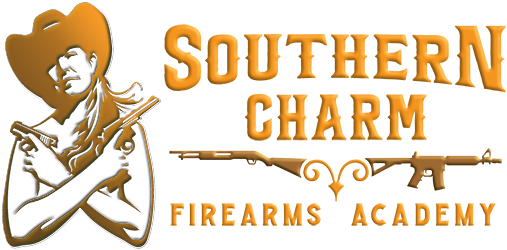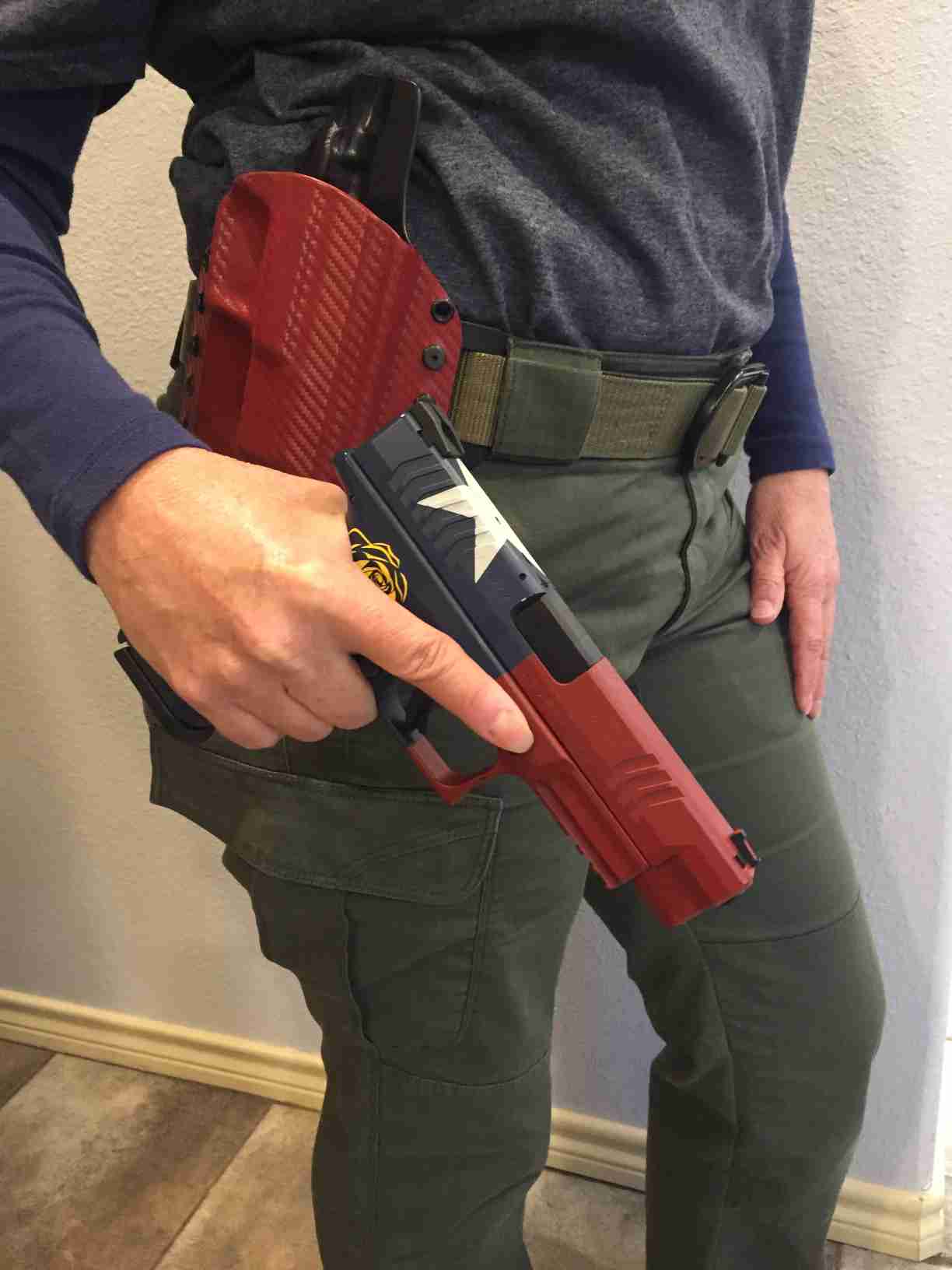In order to operate a firearm safely, let’s do a deep dive into the safety rules of firearms. Negligent/careless handling of firearms is what causes tragedies and unnecessary injuries. With a thorough understanding of firearms safety rules, you can take the risk of using them down to zero. Humans are the biggest variable in using a firearm so it’s important to really understand why each firearm rule is there and the WHY behind it. I’m going to say this here; there are NO firearms accidents, ONLY NEGLIGENCE. To take as much human error out as much as possible, an entire safety code has been created around firearms usage. There are quite a few “creeds” that have created their own set of the firearms safety rules. The NRA uses 3 main rules plus 8 others. Colonel Jeff Cooper came up with the “4 Universal Safety Rules” to which others have added a few extras. Others have dissected each of these and come up with their own rules saying nearly the same thing but with a different tone and focus. Defensive shooting has its own focus and take on the Universal Safety Rules. In order to talk about them, one has to be chosen for the discussion. By choosing the 4 Universal Safety Rules, I’m in no way denigrating the set the NRA uses or any other set of well thought out, comprehensive safety rules. I’m merely choosing a set that is widely accepted and used for a deep dive into the safety rules of firearms.
Safety Rule #1
Treat all guns as if they are loaded. Even if you know it isn’t. This is a rule that for some reason people relax when the gun is unloaded. How many times on the news have you heard about an injury from a firearm and what does the person say? “I thought it was unloaded!”. What this means is that they actually have 2 sets of rules around firearms. They think they are strict if it’s loaded and can relax if it isn’t. Treating all guns as if they are loaded creates a good muzzle awareness and discipline about firearms handling regardless of whether the firearm is clear or isn’t. If a firearm is clear, I’m still not going to pick it up and point it at anyone, even a plastic training aid. Treat the firearm exactly the same 100% of the time. It’s about discipline and good habits. Developing good, consistent and thorough safety habits with a firearm is your obligation as a responsibly armed American.
Safety Rule #2
Never let the muzzle point at anything you aren’t willing to destroy, cry over or pay for. What does this mean exactly? This means being sure of what a safe direction is. The muzzle is actually the end of the barrel where the bullet exits the firearm. So, the bullet goes where the muzzle is pointing. People have shot TVs, pets, light switches and much more while handling their firearm inside their homes. They swore it was unloaded in every instance. What is a safe direction? Pointing the firearm at something that would stop the projectile (the bullet) if a negligent discharge were to happen. So, a pet, tv, wall switch, etc. are all NOT a safe direction. Neither are hands! I work in a gun store. The amount of what I will call “casual gun handling” to be kind, is everywhere! Nearly everyone holds a gun with the muzzle pointing at their palm. And then will hold it up and aim at something, lots of times it’s me! I do a lot of ducking and weaving and educating about what a safe direction is. Most people do not even realize they are pointing a gun (remember rule #1) at many parts of their body while “casually handling” it. Negligent is the proper word for what I’m seeing on a regular basis. And when it’s pointed out, without exception, I’m told “I’ve been shooting my whole life”, implying they know better and how dare I mention it. I say their guardian angels and the guardian angels of anyone in the vicinity are working very hard. Pay very close attention to what you are pointing the muzzle of your firearm at, AT ALL TIMES. WHETHER LOADED OR UNLOADED. Safety is a mindset.
Safety Rule #3
Keep your finger off the trigger until the sights are on the target and you’ve made the decision to shoot. Wow, that seems like a lot of things but it’s very simple. If your finger isn’t on the trigger, it simply can’t go bang. But, going further, it isolates the only time it’s okay for your trigger finger to actually be on the trigger is when the sights are on your target, and you’ve made the decision to shoot. Any other time, no finger on the trigger! PERIOD. EVER. Know what else I see at the gun store ALL THE TIME? Yup, gun picked up with finger on the trigger. So, if they were actually picking up a loaded firearm (and remember, they’ve been shooting their whole life), their finger is on the trigger, they are pointing it wherever and it’s readily dischargeable. Where should the trigger finger go? Indexed high on the slide, nowhere near the trigger guard. The photo chosen for this post shows the proper place for the trigger finger when not on target. Why do we emphasize this? It’s about the sympathetic grasp reflex that happens when we are startled. We flinch and jerk when startled. So, if your finger is anywhere on the trigger guard and you trip, are startled, etc. your finger could very easily and quickly be on the trigger and have a negligent discharge. What is shooting? Loud noises that startle people on the range all the time. Why do people habitually pick up a gun with their finger on the trigger? I think it comes down to 2 main things; we all picked up water guns like this as kids and fired away and secondly, this is what Hollywood shows all the time. Watch any show with guns and you will see fingers on the trigger every time. So subconsciously, people see that and think nothing of it when they do it. How do you stop doing it? My friend Beth Alcazar came up with a great way to remember it. Make a gun with your hand. Now pick up a gun and your trigger finger is automatically in the right place. Make a gun. Take a gun. Brilliant. Simple. Do it.
Safety Rule #4
Be sure of your target and what is beyond it. This short rule that’s last on the list is a real biggie. Why? If you aren’t sure of your target and what’s beyond it, you can’t take the shot. People have killed their kids that came home a few days early from college and didn’t turn the lights on in the house that night as they were coming in. Someone heard them, used their tritium night sights trained directly on the person moving around in their house and took a shot. Tragically all without positively identifying their target. People have been shot out hunting because a hunter heard movement in the brush and took a shot. And here’s a personal story that illustrates another example. Someone near me rapid fired their firearm up in the air and one of those bullets came screaming into my office inches away from where a student and I were standing in front of the TV during a Range Safety Officer Certification Class. Oh, the irony. The bullet was stopped by the back side of the screen which we were standing directly in front of! I’m positive that person couldn’t see my building. It was out of their sight line. Just because you can’t see something beyond your target doesn’t mean you can’t mistakenly hit something unintended if you miss the shot.
All of these firearms rules are there for a reason. We can never become complacent when using them, teaching them, and explaining them. It’s important for anyone that has and/or uses a firearm to understand the rules and the WHY behind each and every one of these rules. When people understand the why, the rules make sense and get followed. If all that’s ever said are just the rules without an explanation of the why, people gloss over and become complacent. It’s important to follow all of these rules all of the time. It’s about creating good habits. Teach them to your children too.
When I teach firearms safety rules, I refer to them as Gun Religion. I’m not making light of any religion by doing so. But, if there is any creed we all adhere to in the gun industry, it is the safety rules. We must live them, love them, know them by heart, teach them, abide by them, make them a lifestyle. Make your gun handling exquisitely observant of the safety rules and teach others to do the same. Proper and safe firearms handling is of the utmost importance. By having great habits all the time, you only have to remember one set of rules and you make your environment a much safer one. There are other ancillary rules that make shooting a safer activity such as wearing proper safety gear, clear a firearm every time you pick one up, use only the proper ammunition, make sure the gun is safe to use, know how to clear malfunctions and more. But these 4 major rules are the best place to start and understand thoroughly. By doing that, you keep yourself, your family, your shooting buddies, and your community safer. Need a refresher? That’s okay! Seek out a certified firearms instructor to evaluate and help out.
To learn more about firearms safety and handling we offer lots of classes and opportunities to learn. Check out our offerings here.


1 Comment
Carleta Watts
4 Safety Rules? Thank You for the reminder:) It certainly doesn’t hurt to be reminded of them. The ones that say “I’ve been shooting All my life” are the ones to be reminded Constantly. If they are offended? Good then No Harm No Foul to anyone. Makes our job on the range that much safer. So Thank You
Love your explanation each rule.